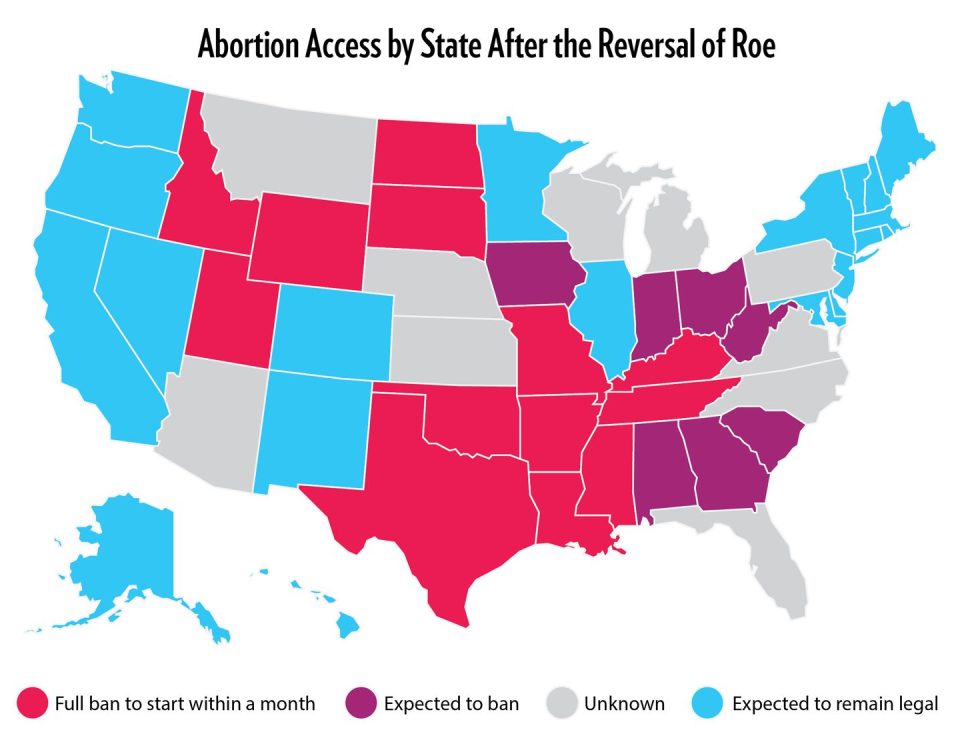
What Insurance Covers IVF: Your Guide to Fertility Treatment Coverage
April 16, 2025
What Is the Success Rate of IVF?
April 16, 2025What Was in the IVF Bill? A Deep Dive into the Fight for Fertility Rights
Imagine wanting to start a family but facing roadblocks that feel out of your control—high costs, legal battles, or even state laws threatening your options. For millions of Americans, in vitro fertilization (IVF) is a lifeline to parenthood, yet it’s been caught in a whirlwind of political debates and legislative tug-of-war. You’ve probably heard about “the IVF bill” floating around in the news, but what exactly was in it? Why does it matter to you, your neighbor, or that couple down the street dreaming of a baby? Let’s unpack this together, step by step, and dig into the details that didn’t always make the headlines.
The Big Picture: Why IVF Legislation Is a Hot Topic
IVF isn’t just a medical procedure—it’s a beacon of hope for about 1 in 7 couples struggling to conceive naturally. That’s millions of people every year leaning on this technology to build their families. But here’s the catch: IVF isn’t cheap, and it’s not always accessible. A single cycle can cost between $12,000 and $25,000, and most folks need multiple tries before success. Insurance? Only a handful of states require coverage, leaving many to foot the bill themselves.
Then came 2024, when an Alabama Supreme Court ruling shook things up. The court decided frozen embryos could be considered “children” under state law, causing IVF clinics to hit pause out of fear of lawsuits. Suddenly, IVF wasn’t just a personal journey—it became a political lightning rod. Lawmakers scrambled, and the “IVF bill”—officially the Right to IVF Act—emerged as a response. But what was it really about? Was it a game-changer or just political noise? Let’s break it down.
The Heart of the Right to IVF Act
The Right to IVF Act wasn’t a single idea but a package of four smaller bills rolled into one, introduced in the U.S. Senate in 2024 by Senators Tammy Duckworth, Patty Murray, and Cory Booker. Its mission? To protect and expand access to IVF nationwide. Here’s what it aimed to do:
A Legal Right to IVF
Picture this: a law saying you, your doctor, and your insurance company can’t be stopped from pursuing or providing IVF. That’s what the Access to Family Building Act part of the bill promised. It wanted to create a federal “statutory right” to IVF, meaning states couldn’t ban it or throw up crazy hurdles—like requiring unnecessary medical tests or limiting it based on your marital status or gender. If a state tried, the Department of Justice could step in with lawsuits to enforce this right.
Why does this matter? After Alabama’s ruling, some worried other states might follow suit, treating embryos as people and making IVF a legal minefield. This part of the bill was a shield against that chaos.
Insurance Coverage for Everyone
Next up: making IVF affordable. The Access to Infertility Treatment and Care Act section said if your insurance covers pregnancy-related care (like delivering a baby), it has to cover fertility treatments too—including IVF. This would apply to private plans, Medicare, and Medicaid. Right now, only about 25% of employers offer IVF coverage, and federal programs barely touch it. This change could’ve been huge for families who’ve been priced out.
Support for Military and Veterans
Here’s a piece that hit home for many: the Veteran Families Health Services Act. It focused on servicemembers and veterans, offering them IVF and even the chance to freeze eggs or sperm before deployment. Think about a soldier injured in combat, like Senator Duckworth herself, who used IVF to have her kids. This part honored their sacrifices by ensuring they could still build families.
Freedom for Doctors and Drugmakers
The bill didn’t stop at patients—it protected doctors and companies too. Health providers could offer IVF without state interference, and drug or device makers could supply the tools needed. It was about keeping the whole system running smoothly.
What Happened to the Bill?
So, with all this promise, why isn’t it law yet? The Senate tried to pass it twice in 2024—once in June and again in September. Both times, it fell short of the 60 votes needed to move forward, landing at 51-44. Most Democrats said yes, but only two Republicans (Senators Susan Collins and Lisa Murkowski) crossed party lines to support it. The rest? They called it a “political stunt” or “overreach,” arguing IVF wasn’t under threat and states should handle it.
Meanwhile, former President Donald Trump jumped in, saying he’d make the government or insurance pay for IVF if elected. Democrats pointed to the bill and said, “Great, then vote for this!” But the GOP held firm, and the bill stalled. As of April 2025, it’s still in limbo, leaving IVF’s future uncertain.
The Hidden Layers: What You Didn’t Hear About
Most articles stop here—listing what was in the bill and why it failed. But there’s more to the story. Let’s peel back the curtain on three angles that haven’t gotten enough airtime.
The Embryo Debate No One’s Solving
At the core of this fight is a question: Are frozen embryos people? The Alabama ruling said yes, sparking fears that discarding unused embryos (common in IVF) could become illegal. The Right to IVF Act sidestepped this, focusing on access instead of defining embryo status. That’s a gap. Without clarity, doctors and patients in some states still face legal gray zones.
Take Sarah, a 34-year-old from Texas. She did IVF last year and has three embryos left. “I don’t know if I can use them, store them, or donate them without risking trouble,” she told me. (I changed her name for privacy.) A 2023 study from the Guttmacher Institute found 19 states have laws hinting at “fetal personhood,” which could tangle up IVF. The bill didn’t tackle this head-on—maybe it should’ve.
The Cost Crisis Beyond Insurance
Even if insurance covered IVF, there’s a catch: out-of-pocket costs. Meds alone can run $3,000-$5,000 per cycle, and extras like genetic testing add up fast. The bill pushed for coverage but didn’t cap these sneaky expenses. A 2024 report from the American Society for Reproductive Medicine (ASRM) found 40% of IVF patients still pay over $10,000 out of pocket, even with some insurance help.
What’s the fix? Some clinics now offer “IVF refund programs”—pay upfront, get money back if it fails after a set number of tries. It’s not perfect, but it’s a start. Lawmakers could’ve baked in cost caps or subsidies for meds to make the bill a real game-changer.
The Mental Health Toll
IVF isn’t just about money or laws—it’s an emotional rollercoaster. Studies show 30%-40% of IVF patients experience anxiety or depression during treatment. The bill ignored this, focusing on access and cost. But what about support? Counseling, support groups, or even a hotline could’ve been part of the package. Imagine a mom-to-be like Jen, who’s on her third cycle: “I wish someone would’ve told me how hard this would be on my heart, not just my wallet.”
How Would It Affect You?
Wondering where you fit in? Let’s make it personal with a quick quiz:
Mini Quiz: Does the IVF Bill Matter to You?
- Do you or someone you love dream of having kids someday? (Yes/No)
- Are you okay with paying $15,000+ out of pocket for a chance at parenthood? (Yes/No)
- Do you think the government should protect medical choices like IVF? (Yes/No)
If you said “yes” to the first or third, or “no” to the second, this bill’s fate could touch your life—or at least your values.
Here’s a breakdown of who’d feel the impact:
| Group | How the Bill Helps |
|---|---|
| Couples Trying IVF | Cheaper costs, legal protection |
| Military Families | Coverage for IVF and fertility preservation |
| Doctors | Freedom to practice without state bans |
| Low-Income Families | Medicaid covering IVF for the first time |
The Other Side: Why Some Said No
Not everyone loved the bill. Republicans argued it went too far, stepping on states’ rights to set their own rules. Some worried it could force religious doctors to perform IVF against their beliefs. Others, like the Southern Baptist Convention, oppose IVF outright, saying it “destroys life” by discarding embryos. They’d rather see alternatives like adoption pushed instead.
Fair point: states do vary wildly. Louisiana, for example, already calls embryos “biological humans” and bans destroying them. The bill would’ve overridden that, which rubbed some lawmakers the wrong way. But here’s a counter: if IVF’s legal patchwork keeps growing, families in one state might lose options their neighbors have. Is that fair?
What’s Next for IVF?
With the bill stalled, IVF’s future hinges on a few things. The 2024 election brought reproductive rights front and center—Vice President Kamala Harris backs IVF, while Trump’s flip-flops leave questions. State laws are shifting too: Nevada and Louisiana passed IVF protections in 2024, but others might tighten rules. And science? It’s racing ahead—think cheaper, portable ultrasound devices or saliva tests to cut clinic visits.
Here’s what could happen by 2030, based on trends:
- Best Case: Congress passes a slimmed-down IVF law, focusing on insurance and basic access. Costs drop 20%-30% with new tech.
- Worst Case: More states adopt embryo-as-person laws, halting IVF in spots. Clinics move to “safe” states, leaving rural families stranded.
- Middle Ground: Patchwork rules persist, but private companies step up with affordable options.
Practical Tips if You’re Facing IVF Now
While we wait for lawmakers, you don’t have to sit still. Here’s how to navigate IVF today:
✔️ Shop Around: Clinics vary in price—call at least three to compare. Some offer payment plans.
✔️ Ask About Grants: Groups like Baby Quest give $5,000-$15,000 to qualifying families.
✔️ Check Your Job: Even without a mandate, 25% of big employers cover IVF—dig into your benefits.
❌ Don’t Skip Counseling: Free support groups exist online—don’t go it alone.
❌ Avoid DIY Hacks: Home fertility “tricks” online? They’re risky—stick to pros.
Step-by-Step: Starting IVF in 2025
- Research Clinics: Look for success rates on the CDC’s ART database (it’s public!).
- Talk Money: Get a full cost breakdown—cycles, meds, storage.
- Build a Team: Doctor, therapist, financial advisor—cover all bases.
- Plan B: Ask about embryo freezing or donor options upfront.
A Fresh Take: IVF as a Right, Not a Privilege
Here’s where I’ll plant my flag: IVF shouldn’t be a luxury for the rich or a political football. It’s a medical tool, like chemotherapy or heart surgery—why treat it differently? A 2022 study in PMC predicted IVF could help create 400 million people by 2100—3% of the world! That’s not a “nice-to-have”; it’s a cornerstone of modern life.
Yet we’re stuck debating instead of doing. What if the bill had paired access with education—teaching schools about fertility early? Or funded research to slash costs? We’re missing the forest for the trees.
Poll Time: What Do You Think?
Should IVF be:
A) Fully covered by insurance like other treatments?
B) Left to states and private companies?
C) Not a government issue at all?
Drop your vote in the comments—I’m curious!
Real Stories, Real Stakes
Meet Lisa, a 38-year-old teacher from Ohio. She and her husband saved for two years for IVF—$18,000 total. “We got lucky on the first try,” she says, cradling her 6-month-old. “But I know friends who’ve gone broke trying.” Then there’s Mark, a veteran in California. His VA plan didn’t cover IVF after an injury left him infertile. “I fought for this country—why can’t I fight for my family?” he asks.
These aren’t just stats—they’re lives. The bill could’ve changed their stories, and thousands more.
The Global Lens: How Others Handle IVF
America’s not alone in this. In the UK, the National Health Service offers up to three IVF cycles for free if you’re under 40—costs are capped, access is broad. Israel? They cover unlimited cycles until you have two kids. Here, we’re still arguing over step one. A 2024 PMC article noted global IVF demand is soaring—delayed childbearing and tech advances are driving it. We could learn a thing or two.
My Two Cents: Where We Go From Here
If I had a magic wand, I’d tweak the bill like this:
- Add a $5,000 tax credit for IVF costs—direct help, no red tape.
- Fund mental health support—every patient gets three free sessions.
- Settle the embryo question—say they’re potential life, not legal people, to calm the storm.
Pie in the sky? Maybe. But it’s a start. The Right to IVF Act wasn’t perfect, but it was a bold swing at a real problem. Its heart—making parenthood possible for more—still beats, even if it’s on life support in Congress.
Your Move
This isn’t just a “Washington thing.” It’s about families, dreams, and what we value. So, what’s your take? Ever thought about IVF for yourself or someone you know? How should we fix this mess? Share below—let’s keep the conversation going.
IVF’s here to stay, but its path forward? That’s up to us.




